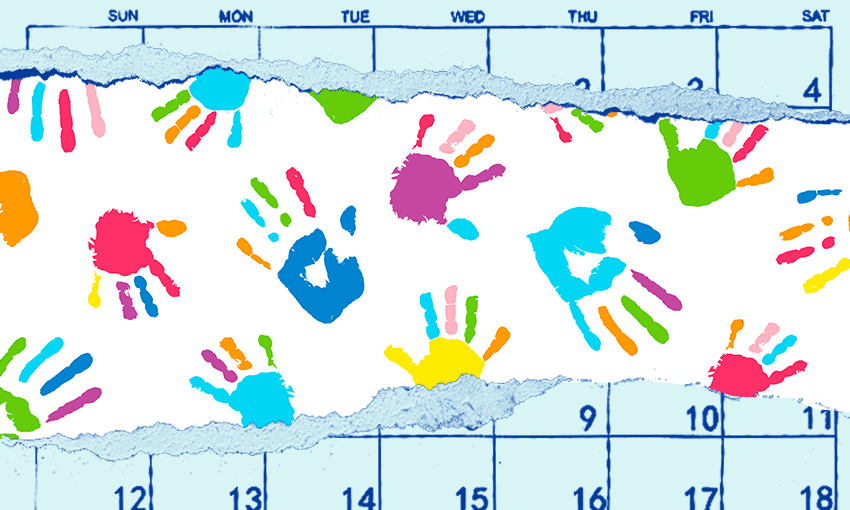Pacific child poverty rates haven’t budged since 2019, despite government attention. A new report suggests some key areas to focus on.
The Pacific population in Aotearoa New Zealand is young. A third of Pacific people are under the age of 15, compared to 20% of the total population of New Zealand.
Of this young population, one in four Pacific children are still living in material hardship compared to one in 10 in the overall population.
This is an alarming statistic considering little has changed since 2019, despite the government’s child poverty agenda.
In 2020/21, 6% of all children in Aotearoa lived in homes with major dampness or mould problems, down from 9% in 2017/18.
But for Pacific children it was twice that, at 12%.
In 2015, Pasifika Futures, a non-governmental charitable organisation, found that more than half of the Pacific population live in the most deprived areas of Aotearoa, were three times more likely to be unemployed than New Zealand European families and of those living in the most deprived areas, 60% lived in crowded housing.
These factors severely affect Pacific people’s health, especially children.
Today, Moana Connect, a Pacific children advocacy group, has launched its first comprehensive 10-year action plan, Tamaiti Ole Moana, aimed at making a real and sustained difference in the lives of all Pacific children and their families.
Here are the top four points from the report, showing what is needed most to make significant improvements to Pacific children’s lives.
1. Healthy, uncrowded homes
We all know that living in a healthy home does wonders for a child. The report asks for a minimum of 5,000 multi-generational homes to be built through the Government Build Programme – ranging from state houses, community housing provider homes, and KiwiBuild – that will work for Pacific families.
There’s also a push to insulate and ventilate the homes of 30,000 families as that’s how much is needed to improve the lives of Pacific children, according to Moana Connect.
“Better housing is not just healthy and affordable, it’s culturally appropriate, with homes large enough to accommodate our multi-generational families so that we can raise our children with their elders,” Chief Executive Jacinta Fa’alili-Fidow says.
2. Higher incomes for Pacific families
According to the Human Rights Commission, Pacific workers get paid a lot less than other workers. In 2021, Pacific men were paid almost 20% less than Pākehā men. Pacific women were paid almost a quarter less than Pākehā men. An easy start to this would be implementing pay transparency.
With Pacific women far more likely to be earning minimum wage (even outside of entry-level jobs), raising the minimum wage to living wage would give Pacific families a good start in life, so that they’re able to access better healthcare and education opportunities.
3. Better care and healthcare
The report includes a call to expand funding for free GP visits, dental care and prescriptions, as well as improved access for children in state care.
It cannot be understated how important it is for Pacific families to get support from Pacific-based providers who understand their culture and needs.
Last November, the government launched the Ola Manuia Interim Pacific Health Plan, which outlines a programme of work that will support the health and wellbeing of Pacific families and communities for the next two years.
The impacts of that programme have yet to be recorded.
4. Education
By improving the lives of Pacific children today, the government can help shape a better future for the community and the country. Education to sustain Pacific culture and support families is key.
The 2018 Census saw young Māori and Pacific students leaving the education system more educated and qualified than older Māori and Pacific people. This is a positive development, and Moana Connect’s priorities start even earlier in Pacific children’s lives.
There’s a plea to expand the number of Pacific childcare centres and the Pacific ECE workforce in Aotearoa.
“We need better housing for our children, we need better education, better healthcare, and we need to build incomes and intergenerational wealth to lift our families out of poverty. All of Aotearoa New Zealand benefits if our Pacific communities are strong and thriving,” Fa’alili-Fidow says.
Moana Connect has emphasised that the government needs to empower the Pacific communities to deliver the solutions as they know their people best. Their message to the government is straightforward – “trust us and work with us.”
“If we’re not brave, we will keep applying small, piecemeal ‘solutions’ that will not make a material difference to the community who needs it most,” Fa’alili-Fidow says.
This is Public Interest Journalism funded through NZ On Air.



